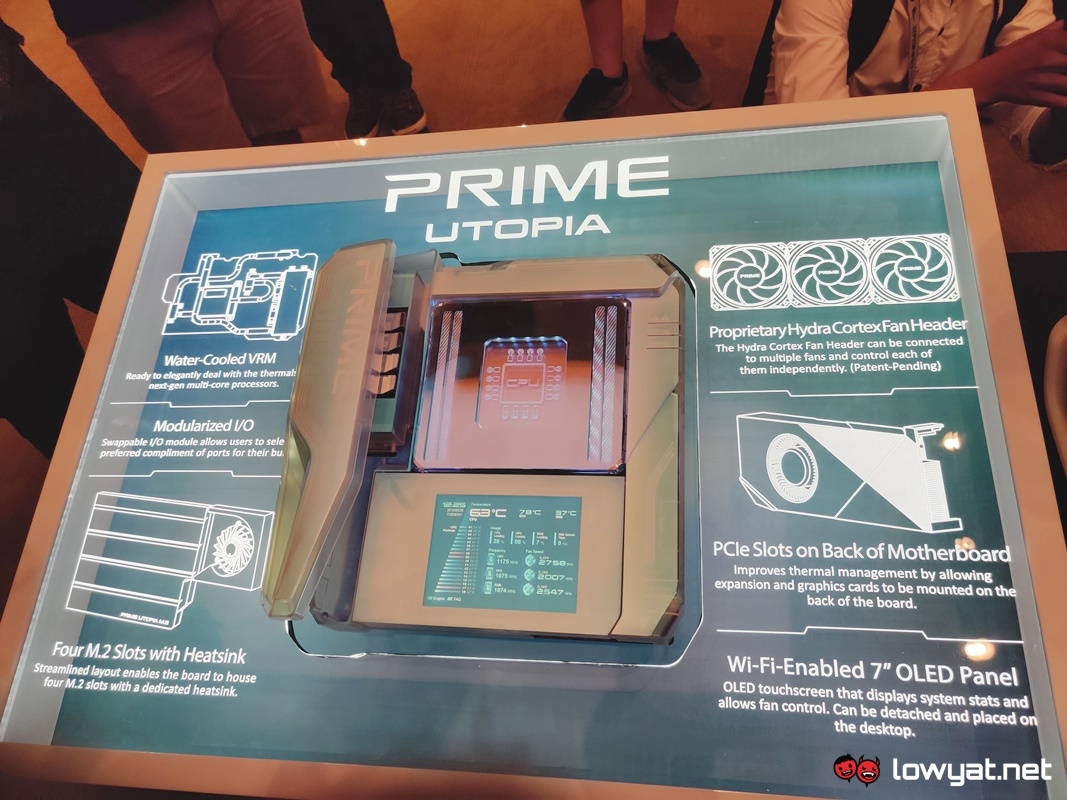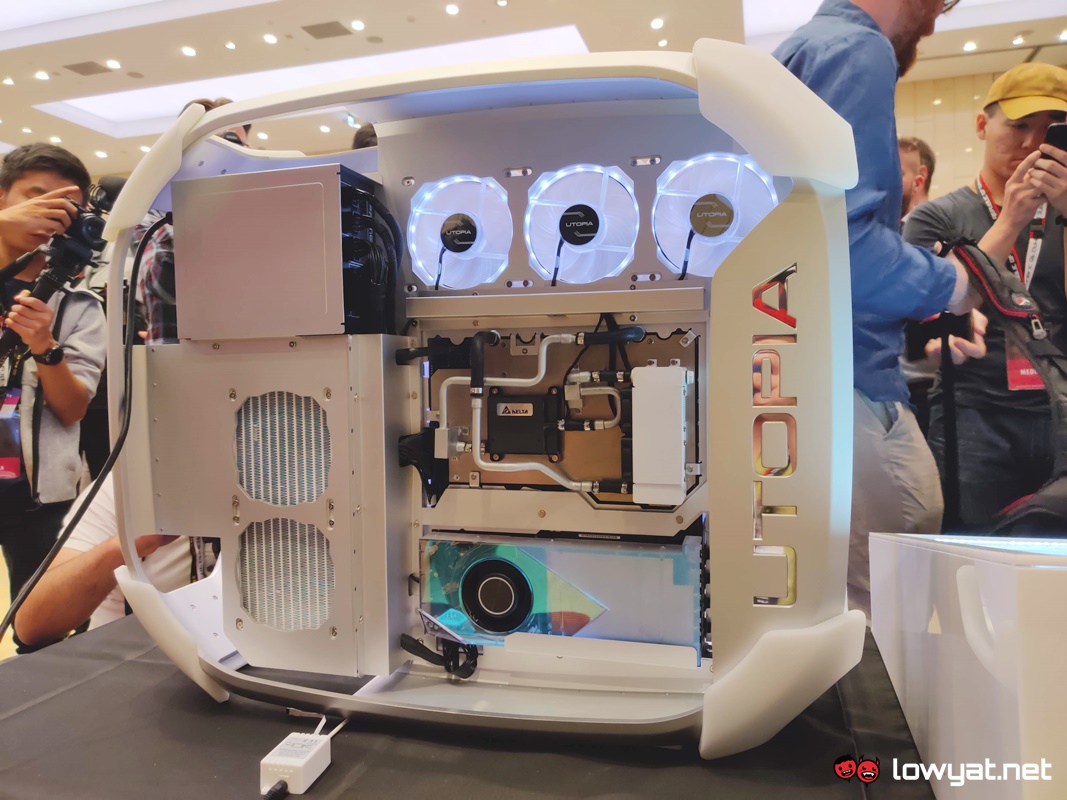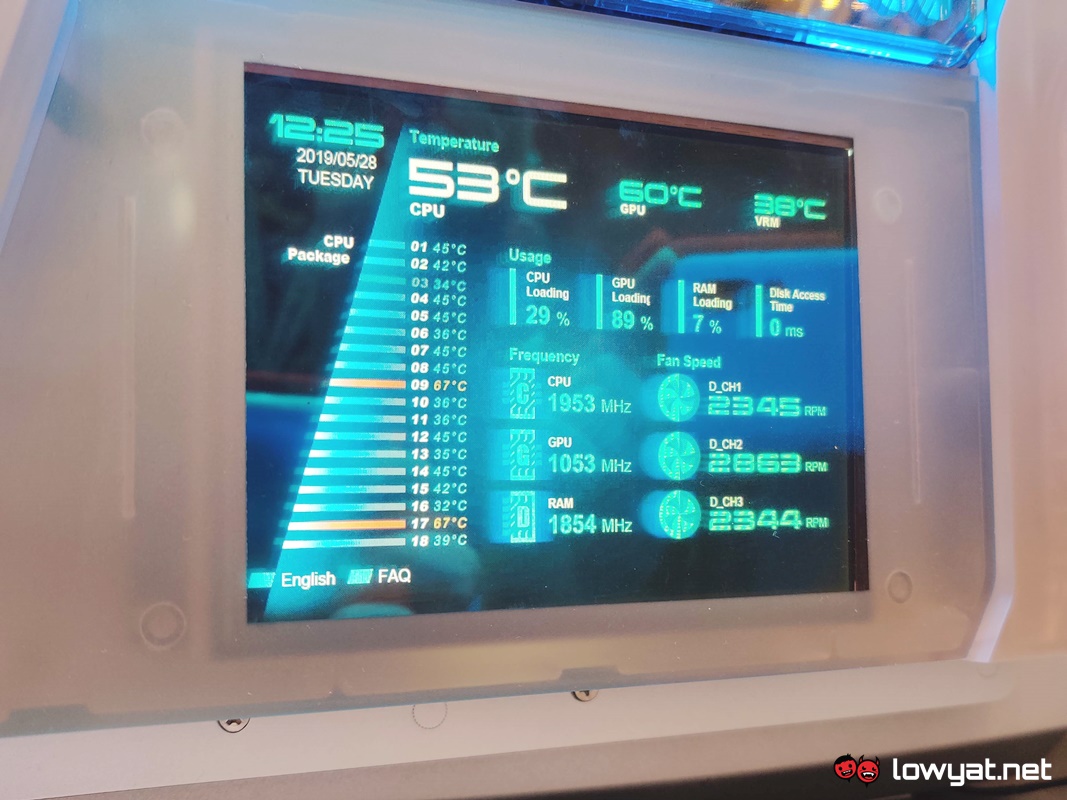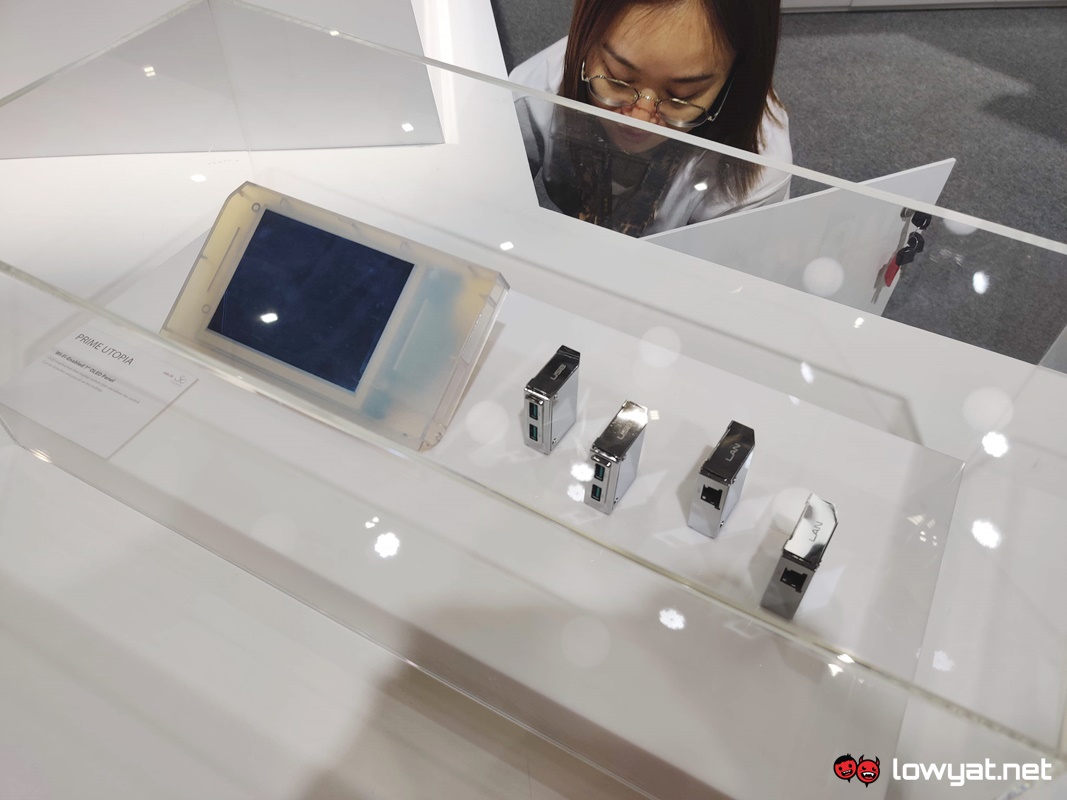There’s no accurate or proper way to define what the Prime Utopia, but if we were to describe it, we would say that it looks like a tangible version of “controlled chaos”. The motherboard is based on the Intel’s current X299 chipset. For its enthusiast-level Core X series HEDT CPUs. Beyond that, however, there’s actually very little or next to no actual information about the motherboard’s specifications.
Hardware specs notwithstanding, the Prime Utopia’s concept is interesting. The entire shroud on top of the PCB is an AiO, built specifically by ASUS to completely envelop both the CPU and the surrounding VRMs on the motherboard. On that note, cooling is then handled by a radiator and its fans that are, in turn, connected to ASUS’ patent pending Hydra Cortex Fan Header. To summarise the function of the Hydra Cortex; the header would essentially allow multiple fans to be connected to one header, while giving users the ability to adjust the fan speed on each fan individually.
You’ll also notice that the Utopia’s design doesn’t accommodate for the graphics card at the front. Well, ASUS’ solution to the design was to shift the entire component directly behind the motherboard, along with the board’s PCIe slots. By doing this, ASUS says this improve thermal management not just for the graphics card, but also for other components on the motherboard. Speaking of other components, you’ll also notice that the Utopia has somewhat standardise the heatsinks of the M.2 SSD slots. In total it looks like the motherboard would carry a total of four M.2 slots, should it enter production. On that note, there’s also the detachable 7-inch Wi-Fi OLED display that displays – if it wasn’t obvious from its looks – the statistics of the Prime Utopia’s components.
But more interesting than M.2 slots and repositioned PCIe slots are the Prime Utopia’s modular rear I/O ports. As the description suggests, the feature would allow users to easily swap out ports for their own occasion. From the looks of it, it does look like the number of modular ports are limited to four modules. However, it goes without saying that ASUS could change this anytime.
As a concept, the Prime Utopia gets some points in the innovation department. If we were to base it on ASUS’ track record, it’s unlikely that the motherboard will ever make to the production line as whole. Instead, any and all future motherboards made by the brand could be styled around some elements of the motherboard. For now, only time will tell.



